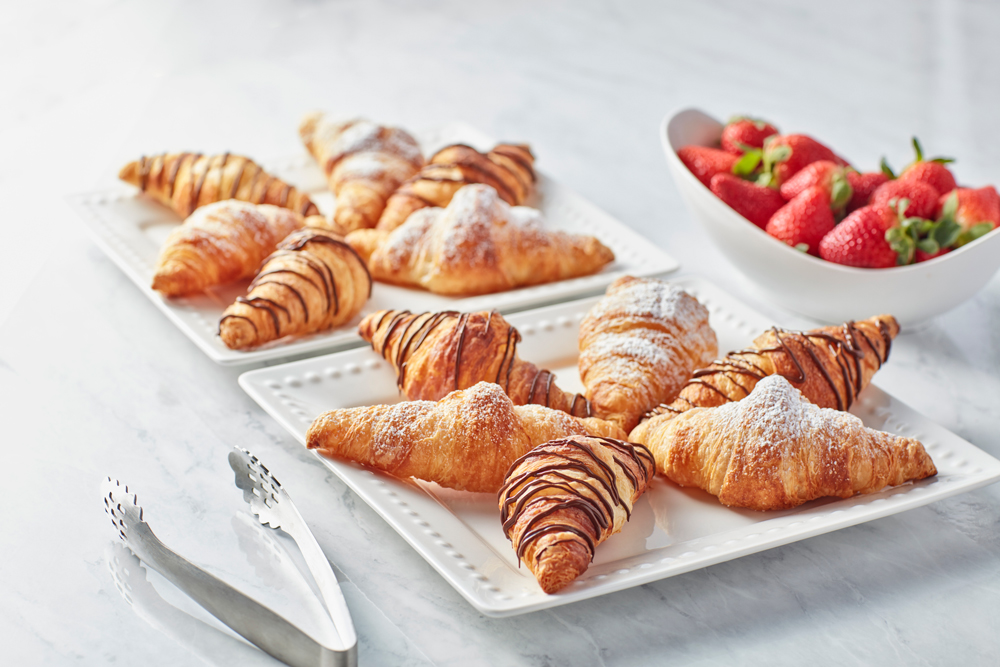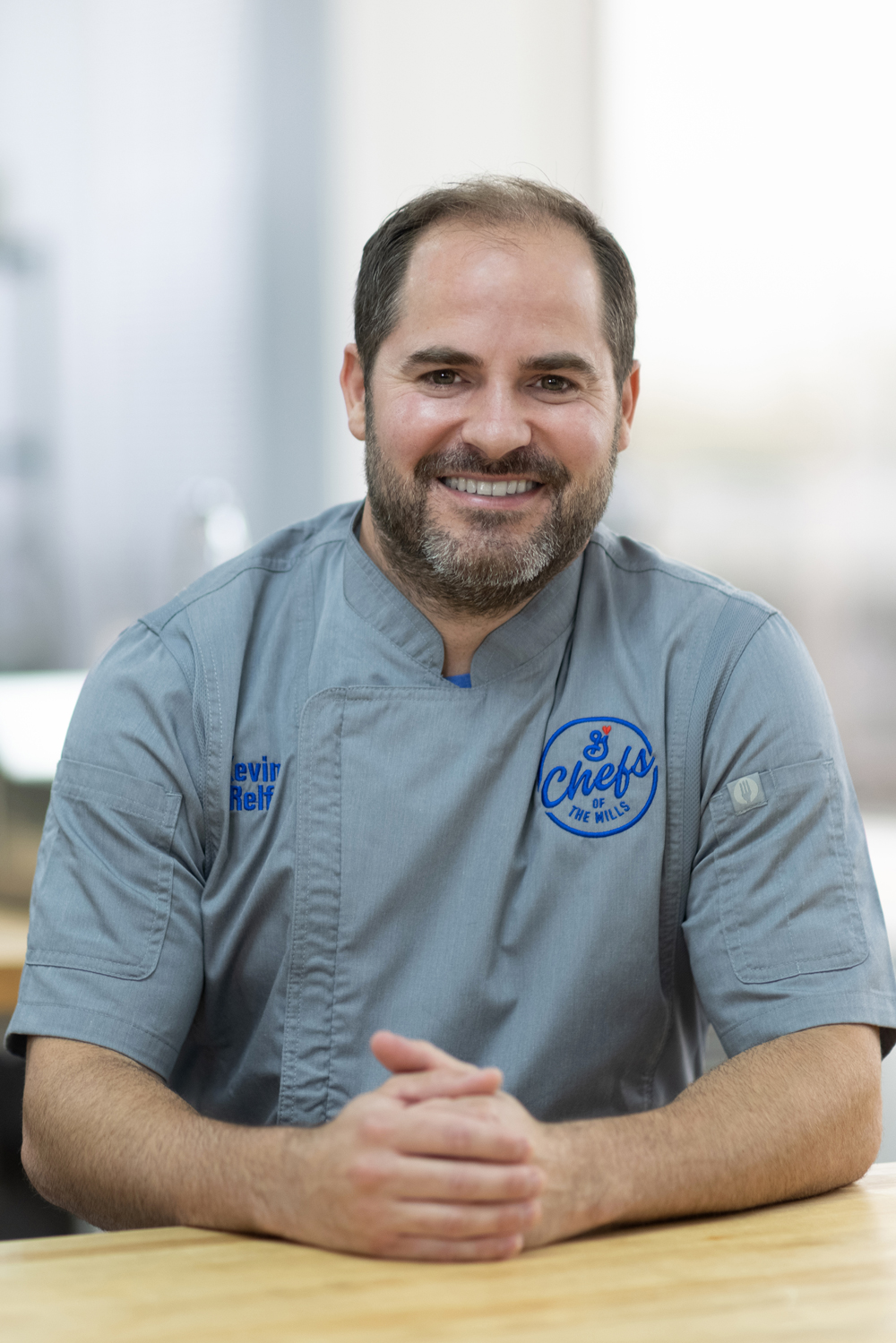
The Reality of High-Volume Catering
05 March 2024Uncovering the details and challenges of serving thousands of guests.
By Lisa Parrish, GMC Editor
Feedback & comments: This email address is being protected from spambots. You need JavaScript enabled to view it.
 Dreaming about a high-volume catered event looks very different when a culinary student describes their visions versus the reality-tested version of a Walt Disney World resort chef.
Dreaming about a high-volume catered event looks very different when a culinary student describes their visions versus the reality-tested version of a Walt Disney World resort chef.
Successfully serving a dining event for throngs of guests requires specialized skills, culinary know-how and a level of experience few culinary students possess. For this reason, it is wise to ask top chefs with expertise in feeding thousands at one time to impart their knowledge and let students in on the behind-the-scenes workings of large-scale events.
Students can grasp the importance of speed, efficiency and the mechanics of cooking in this specialized environment. They may be amazed at the total amount of planning and down-to-the-minute timing of serving hundreds of people food at optimal temperatures. Details such as equipment pinch points, guest traffic flow and the number of components to complete a dish matters, which may never have crossed students’ minds when envisioning a high-volume catering scene.
I asked General Mills Corporate Chef Kevin Relf, a member of the Chefs of the Mills team, about his involvement in foodservice events in large hotels, lodgings and commercial spaces. He shared his knowledge in hopes that culinary students can glean insights and broaden their dreams with a dose of reality about the details of catering large events.
How many guests did you serve during a high-volume catered event?
In a prior role, I used to do grand openings where we would open the doors for the first time to thousands of people. We did this once per month in different cities across the country. Typically, we would serve food to over 3,000 people.
 How were menu items selected?
How were menu items selected?
Since it was a grand opening, we wanted everyone to get a taste of our menu, so we created smaller versions of certain menu items and served those. A majority of the recipes we chose were easier to execute in bulk and were three or less components to building the final dish (e.g. a fried rice that can be scooped and topped with different proteins—think scoop and go).
However, we also did some more intricate items that had more than three components to the build. Every second counts, so having less components saves on speed during the rush. One other major thing to consider is where the final dish will be executed to avoid equipment pinch points. For example, if everything is cooked on the grill, you will be limited to the size of the grill for how much quantity you can make at a time. If the final items are spread between ovens, grills, saute, fryer, and cold prep, it allows you to separate where the food comes from and increase efficiency in execution.
How were cooking responsibilities segregated? Was this different than a restaurant setup?
Depending on the scale of the operation, there may be a separate team dedicated to banquets and catering. In the prior example with grand openings, we broke out into two-person teams and tackled each portion of the menu. We would try to group by equipment type if possible. For example, if we needed to grill steak, chicken, and shrimp for the main event, one person would do that grilling and knock it out efficiently. This helps avoid equipment pinch points and multiple people doing the same thing. It will be somewhat different than a restaurant setup because you are prepping large quantities ahead of time per the catering menu vs. working a station on the line preparing food a la minute.
What are some of the high-volume challenges a chef faces?
The most difficult thing they will face is timing the prep and serving properly to ensure food is served at the proper temperature and quality level. If food is prepped too far in advance the quality suffers. If they wait too long, they will not get the food out on time and may cut corners (not to mention added stress on team members).
Other challenges chefs typically face are:
- Having the right prep equipment and hot/cold holding equipment
- Having enough space to store prep
- Ensuring proper staffing levels to handle the amount of work—whether small or large
Please give students tips and tricks for planning large events.
- Preparation is everything.Visualize how you want the final products to show up and how you would like the service to flow. Think through every detail from top to bottom (e.g., when you need to order product, who will prep and where, what will the final food look like and be garnished with, what serving ware will you need, etc.).
- Everyone needs to be on the same page to execute large events smoothly. In order for that to happen, schedule regular meetings with all parties involved ahead of the event (including front of house and kitchen staff). Clearly communicate your vision and be willing to take into account the opinions of others to make it better.
- Put the effort where it counts. For example, you could buy peeled garlic vs. garlic heads. This will save your prep team time to focus on more important tasks. Do this exercise with each part of the menu.
- Separate from where the food is executed. For example, have hot and cold food serving areas separate. Incorporate action stations throughout the room to direct traffic around the area and avoid congestion for your guests. Utilize all possible space to avoid pinch-point areas.
 Chef Kevin Relf is a member of General Mills Chefs of the Mills, a specialized group of culinary professionals at General Mills Foodservice who offer training, ideas and inspiration to help foodservice operations thrive. Click here to view the General Mills catering resource Chefs’ Collections, which features croissants, biscuits, cinnamon rolls, brownies and scones in recipes from simple bites, to a step-up from standard to elevated choices with action stations.
Chef Kevin Relf is a member of General Mills Chefs of the Mills, a specialized group of culinary professionals at General Mills Foodservice who offer training, ideas and inspiration to help foodservice operations thrive. Click here to view the General Mills catering resource Chefs’ Collections, which features croissants, biscuits, cinnamon rolls, brownies and scones in recipes from simple bites, to a step-up from standard to elevated choices with action stations.
More about Chef Kevin Relf
Labor difficulties, elevated costs, supply-chain issues, demanding guests—Chef Kevin Relf has seen it all and does everything possible to help General Mills Foodservice’s hotel, lodging, and commercial restaurant customers overcome these challenges.
Since joining the Chefs of the Mills in 2020, Chef Kevin has shared ideas, recipe inspiration, and products that simplify back-of-house operations and help make the life of a foodservice operator easier.
Having spent years in the kitchen, Chef Kevin has been an executive chef at Loews Hotels & Resorts and an executive sous chef at a prestigious country club in Florida. He has also managed foodservice operations for Life Time: Healthy Way of Life’s more than 130 restaurants. Additionally, he has helped open more than 15 restaurants in Italy, New York, Florida, Minnesota, and more.
